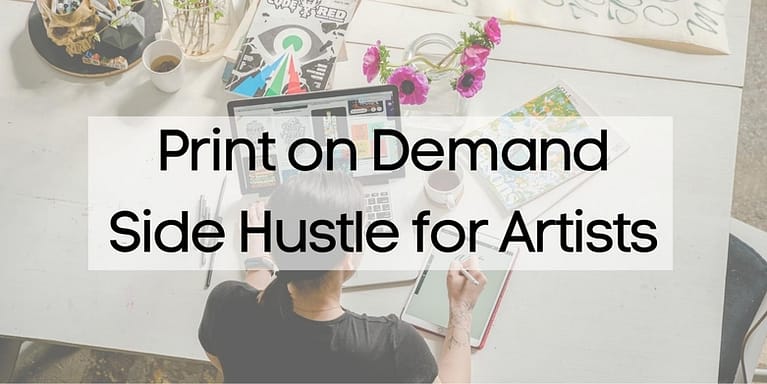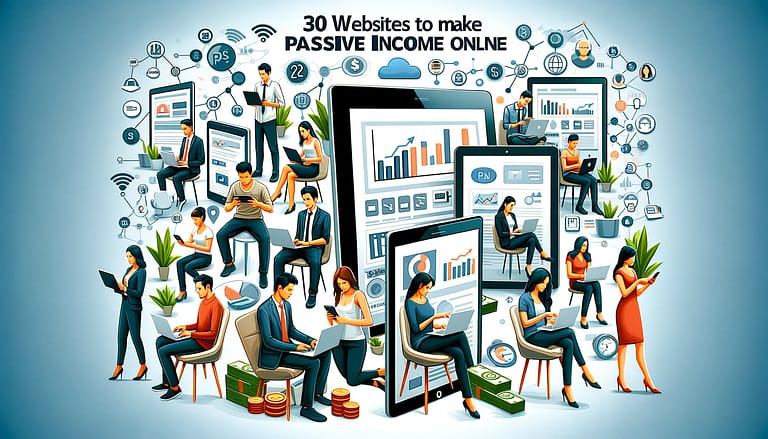Building Passive Income – A Comparison of 4 Models to Make Money Online
Achieving financial freedom means more than just earning a high salary. To break free from the reliance on active income, you need to build passive revenue streams that can make money while you sleep. In this post, I’ll compare four proven passive income business models—affiliate marketing, dropshipping, Amazon FBA, and print-on-demand (POD). I’ll share actionable tips, detailed examples, and key software to help you get started with each one.
Defining Passive Income and Why It’s So Valuable
Passive income is money you earn regularly with minimal ongoing effort after the initial work of setting up your business. Passive income offers many benefits:
- Generate extra cash outside your day job to invest, save, or spend guilt-free
- Reduce reliance on your active income from your 9 to 5
- Save more for retirement without depending only on stock market returns
- Pay off debt faster by putting extra passive earnings toward loans
- Gain financial independence and the freedom to work less or quit altogether
- Open up time to focus on family, hobbies, passion projects, or whatever makes you happy
Passive income takes consistency and effort up front, but choosing the right business model allows your income to become mostly hands-off over time. Let’s look at four proven ideas.
Passive Income Idea #1: Affiliate Marketing
With affiliate marketing, you earn commissions by promoting other companies’ products or services. Here are some tips to get started:
- Join affiliate networks like ShareASale, Clickbank, or CJ Affiliate that offer products in your niche.
- Choose affiliate products that appeal to your audience and have attractive commission rates (typically 5-30%).
- Get a unique tracking link for each program and add it unobtrusively to related content (e.g. blog posts, videos, resource pages).
- When readers click your link and complete a targeted action (sign up, purchase, etc), you earn a commission.
- Use affiliate links moderately – provide value first rather than hard selling.
Affiliate marketing has relatively low startup costs. You don’t need to create your own info products or handle fulfillment. By promoting affiliate offers that complement your content and audience, you can monetize your existing platform. Recurring commissions add up over time as you build relationships and trust.
For example, Michelle Schroeder of Making Sense of Cents earns over $100k/month from affiliate marketing. She publishes reviews and recommendations of valuable products and software for her audience of bloggers and entrepreneurs. By adding affiliate links to her content, she monetizes her blog’s traffic into a hefty passive income stream.
Recommended software:
- Leadpages: simplifies creating landing pages to promote affiliate products and capture leads.
- Linkly: Create simple, beautiful and branded link trackers with smart redirects, retargeting pixels, QR codes and more.
- 10Web: Build a WordPress website with AI in minutes.
Passive Income Idea #2: Dropshipping
With dropshipping, you sell products from a third-party supplier but offer fast shipping directly to customers under your own brand. This allows you to focus on marketing vs fulfillment.
Tips for starting a dropshipping business:
- Choose a specialized product niche that you’re passionate about to build your brand around. Research competitors and target audience.
- Find reliable suppliers on AliExpress, SaleHoo etc and negotiate your wholesale pricing.
- Sync supplier catalogs to your online store through plugins like Oberlo.
- Drive traffic to your store with SEO, social media, and paid ads. Provide excellent customer service.
- When an order comes in, the supplier packages and ships the product directly to the customer.
- You keep the profit margin between your retail price and wholesale supplier cost.
With automation, a great brand, and strong marketing, dropshipping can become a mostly passive source of income after the upfront work. But lower profit margins per item mean you need higher order volumes to maximize earnings.
For example, Kevin David built a multiple 7-figure dropshipping store from scratch in just one year. By relentlessly testing products and Facebook ads, he scaled up sales rapidly to over $100k/month in revenue. Kevin emphasizes the importance of branding and automation.
Recommended software:
- Shopify: makes it easy to set up an attractive online storefront and sync your supplier catalog.
- Oberlo – This is a popular dropshipping app that integrates directly with Shopify and allows you to easily import and sync products from various suppliers.
Passive Income Idea #3: Amazon FBA
Amazon FBA (Fulfillment by Amazon) leverages Amazon’s massive fulfillment network and built-in traffic so you can scale your own brand faster.
Tips for starting an Amazon FBA business:
- Source popular products wholesale that sell well on Amazon. Aim for at least 30% margins. Use tools like Jungle Scout to assess demand.
- Send bulk shipments to Amazon warehouses (you pay an inventory storage fee).
- Enhance your Amazon product listings with SEO keywords, compelling copy, and good photos.
- Amazon handles order fulfillment: picking, packing, shipping, returns, and customer service.
- You simply manage inventory, branded content, and marketing. Amazon collects payment and pays you the profits.
Selling on Amazon taps into the site’s 200+ million customers, many of whom love the convenience of Prime free shipping. By offloading fulfillment tasks to Amazon, you can focus on sourcing good products, marketing, and branding. Recurring profits become mostly passive.
For example, Greg Mercer built a $10 million/year business reselling stand up paddleboards on Amazon. He optimized listings to rank highly and leveraged Amazon’s logistics to ship oversized boards cost-effectively. Despite 70%+ of his revenue coming from Amazon, Greg still owns his brand relationship with customers.
Recommended software:
- Jungle Scout offers powerful tools for product research, keyword tracking, listing optimization, and inventory management.
Passive Income Idea #4: Print-on-Demand
With print-on-demand (POD), you design and market customized products like apparel, home goods, art prints, and more. When you get an order, a printing company produces and ships the item on demand, handling all fulfillment.
Tips for starting a POD business:
- Identify your niche and create unique designs for your target audience (great for artists and designers).
- Upload designs to a POD platform like Printful, Printify, or Teespring.
- Integrate your online storefront using Shopify, Etsy, WooCommerce etc.
- Market and sell your branded merchandise using social media, influencers, paid ads, SEO, etc.
- When you make a sale, the POD company prints and ships the order while you collect the profit.
POD minimizes your upfront costs, inventory, and fulfillment workload. You focus your energy on designing products tailored to your audience and marketing your brand effectively. But, you’ll need high sales volumes to maximize profits due to POD’s per item margins.
For example, Robert Kent built a $60k/month POD business through his minimalist YouTube channel. By designing wall prints and apparel featuring his signature aesthetic, Robert leveraged his audience into a sizable merchandising empire.
Recommended software:
- Canva: makes it easy for non-designers to create attractive graphics and mockups for print-on-demand products.
- Printify: Sell custom t-shirts, phone cases, and 800+ products with your designs printed on demand.
- Placeit: Simple, Personalized Mockups With Our Customizable Templates.
Comparing the 4 Models
Here’s a summary of the pros and cons for each passive income approach:
- Affiliate Marketing
- Low startup costs
- Can promote other brands you love
- Need an audience and marketing skills
- Commission model incentivizes you to provide value
- Dropshipping
- Control over branding and customers
- Lower profit margins mean high volume is key
- Fulfillment handled by suppliers
- Amazon FBA
- Built-in traffic and Prime customers
- Powerful fulfillment capabilities
- Less control over brand relationship
- Print on Demand
- Minimal inventory or upfront costs
- Focus on great designs
- Lower margins require high sales volume
- Fulfilled by printing companies
At first glance, earning passive income online seems daunting. But with an incremental approach and the right business model matched to your strengths, it’s achievable. Start exploring your options aligned to your interests and skills.
Choose a model that fits your resources and risk appetite. Master one income stream at a time. Take it step-by-step – set up your business, learn by doing, reinvest profits to grow. Building diversified passive income takes persistence, but pays off tremendously in the long run, both financially and in quality of life.
With the freedom of recurring income that takes minimal maintenance, you can reduce reliance on a traditional job and open up time for what matters most. Act now, make a plan, and build the life you want, one passive income stream at a time.






